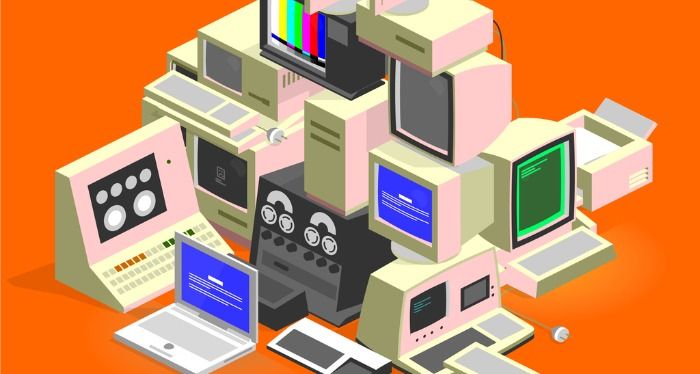The what, why and how of legacy application modernisation
Views, News & more

What is legacy application modernisation?
Legacy app modernisation is when an application made with now outdated technology is updated in order to make it work effectively in a modern environment alongside other modern apps.
In many scenarios, outdated applications (known as legacy apps) will be vital to a company’s operations and any downtime would have a detrimental impact on its functioning. As a result, rather than suffer the effects of having these apps, out of action while they are replaced or updated, companies often leave them as they are.
However, outdated apps will eventually need to be updated – for example, if the company decides to move to a cloud-based infrastructure in which legacy apps will not function well. In this situation, there are several reasons why the firm may choose to modernise rather than replace their legacy apps.
Firstly, if no modern app on the market fits the needs that the legacy app served for the company. Secondly, if the legacy app represents a crucial component of the company’s portfolio, then a replacement may not suffice. Thirdly, if the legacy app is the best way to fulfil certain security regulations.
Often, legacy app modernisation involves some element of reworking the outdated app’s code, whether that be small adjustments or a total rewriting. If a company is migrating to the cloud, vital legacy apps can be rebuilt with a cloud-native architecture.
Why undertake legacy app modernisation?
In a situation where an outdated app is critical to a company’s operations and perhaps can’t effectively be replaced by a modern app, there are numerous reasons why the organisation may choose to undertake a legacy app modernisation.
One of the key considerations that could prompt a legacy app modernisation is security. As applications become outdated over time and new threats emerge, legacy apps (and, by extension, the organisation itself) can become more vulnerable to security lapses.
As we mentioned earlier, the financial cost and time required to update these weaknesses can be significant, which may prevent the company from acting. Vulnerabilities may then worsen over time and the organisation may eventually find that it has significant security risks that threaten its compliance with security regulations and decide that the issue needs addressing.
While legacy app modernisation may cost a business or organisation a considerable amount of both time and money, maintaining a legacy app as it is can be similarly expensive and time-consuming. In a Logicalis survey of Chief Information Officers (CIO’s), the majority of those surveyed said their company spent between 40 to 60 per cent of their time maintaining legacy applications.
Clearly, this is a huge use of both resources and time. These mounting costs may eventually mean that a company has to consider investing in a legacy app modernisation, especially if this cost is combined with the aforementioned security and regulatory issues that may arise from outdated applications.
How to go about a legacy app modernisation
The first step in a successful legacy app modernisation will be developing a thorough plan on how the business or organisation is going to go about the process. This will include the potential difficulties that may arise during the modernisation itself and possible issues for the wider business that may result from a system critical application being down for a day or two (if necessary).
This will also have the benefit of helping the company to calculate the finances they need to budget for the process. That way, even if the modernisation does run somewhat over budget, the organisation is unlikely to be completely caught out by the cost of the task.
Perhaps the most crucial part of the legacy app modernisation will be defining the issues that currently exist with the outdated applications and identifying the modern, up-to-date technology that can solve these problems and make the process a success.
It will also, of course, be vital to determine the best method of legacy app modernisation to suit the organisation’s needs and goals. If the application only requires minimal changes in order to modernise it then a “lift-and-shift” approach may be the easiest and most cost-effective method.
However, if an organisation is, for example, moving its infrastructure to the cloud, then an application’s code may require more comprehensive modernisation in order to function properly. In this case a revising or even rebuilding method, although more costly, difficult, and time-consuming, might be more suitable.
Another important step prior to the legacy app modernisation itself will be for the organisation to determine whether its IT department has a sufficient skill-base to complete the process to the proper standard. If not, the company must determine whether it needs to up-skill its existing IT team or whether it needs to hire new professionals with the necessary skills.
Finally, during the process itself, it will be important to ensure that every change made to the application or applications is recorded in detail. This will be crucial to helping to identify and address any future problems that may occur with the app post-modernisation.
Get in touch
020 7847 4510
We may process your personal information in order to send you information you request, measure and improve our marketing campaigns, and further our legitimate interests. For further details, see our privacy policy.
Contact us
-
- Head Office:
- hSo, 50 Leman Street, London, E1 8HQ
- Switchboard:
- 020 7847 4500
- Support (24x7):
- 0333 200 3337
- support@hso.co.uk
- Marketing & Sales:
- 020 7847 4510
- info@hso.co.uk

















